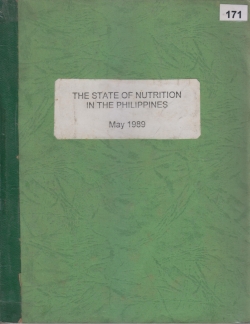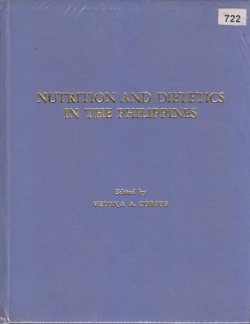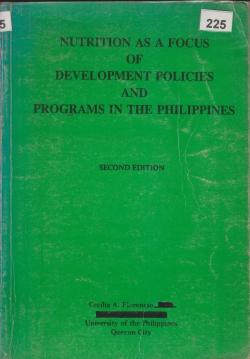The State of Nutrition in the Philippines

Book Stores
Type
Book
Authors
Florentino ( Rodolfo )
villavieja ( Gracia )
valerio ( teresita )
tanchoco ( celeste )
kuizon ( miriam )
Category
Book
[ Browse Items ]
Publication Year
1989
Publisher
Food and Nutrition Research Institute, Philippines
Pages
49
Subject
Nutrition survey--Philippines
Abstract
The latest national nutrition survey conducted by the Food and Nutrition Research Institute revealed that protein- energy malnutrition still persisted as the primary nutrition problem of the country. This was indicated in several forms of malnutrition among preschool and school children who were moderately to severely underweight as well as wasted and stunted. Energy inadequacy was also evident among Philippine households and particularly among preschoolers and pregnant and lactating women. Nutritional anemia was highly prevalent among six month to one year old infants, adults 60 years old and above, and pregnant and lactating women; and goiter was most prevalent among pregnant and lactating females.
Among the regions covered in the survey, Western, Central and Eastern Visayas and also Western and Central Mindanao were apparently worst off in terms of dietary and/or nutritional status. Nutritionally-at -risk occupational groups were identified as: hunters, loggers and related workers; service, sports and related workers;; hired/seasonal farm workers; common and others laborers; craftsmen and production process workers; workers in transport and communication; and subsistence/small/hired fishermen. Undernutrition was closely linked to insufficient income, small peso value of food consumed, low education of meal planners, and large household size. Food budget appeared to be the strongest determinant of food consumption, while many households were below the food threshold. the effects of the economic crisis in previous years were manifested in the decline of per capita food consumption levels as well as increased prevalence of acute and chronic malnutrition among preschool children.
The urban poor emerged as the nutritionally-deprived segment of the Philippine Population, more so than the rural sector in general.
The cumulative effect of reduced energy and nutrient intake caused by frequent infection is an important cause of malnutrition. Hence, the improvement of the health status of the population is an integral part in the solution of the nutrition problem, on top of integrated response from other development sectors. The state of nutrition in the Philippines suggests a second look on current strategies addressed to nutritional improvements of the populations and a re -evaluation of intervention schemes. Prospects for economic recovery must go hand in hand with nutrition recovery. In the attainment in the country's ultimate objective which is nutritional health and good quality of life for the Filipino people, concerted efforts whether direct or indirect towards the achievement of this goal is a continuing challenge.
Among the regions covered in the survey, Western, Central and Eastern Visayas and also Western and Central Mindanao were apparently worst off in terms of dietary and/or nutritional status. Nutritionally-at -risk occupational groups were identified as: hunters, loggers and related workers; service, sports and related workers;; hired/seasonal farm workers; common and others laborers; craftsmen and production process workers; workers in transport and communication; and subsistence/small/hired fishermen. Undernutrition was closely linked to insufficient income, small peso value of food consumed, low education of meal planners, and large household size. Food budget appeared to be the strongest determinant of food consumption, while many households were below the food threshold. the effects of the economic crisis in previous years were manifested in the decline of per capita food consumption levels as well as increased prevalence of acute and chronic malnutrition among preschool children.
The urban poor emerged as the nutritionally-deprived segment of the Philippine Population, more so than the rural sector in general.
The cumulative effect of reduced energy and nutrient intake caused by frequent infection is an important cause of malnutrition. Hence, the improvement of the health status of the population is an integral part in the solution of the nutrition problem, on top of integrated response from other development sectors. The state of nutrition in the Philippines suggests a second look on current strategies addressed to nutritional improvements of the populations and a re -evaluation of intervention schemes. Prospects for economic recovery must go hand in hand with nutrition recovery. In the attainment in the country's ultimate objective which is nutritional health and good quality of life for the Filipino people, concerted efforts whether direct or indirect towards the achievement of this goal is a continuing challenge.
Description
The latest national nutrition survey conducted by the Food and Nutrition...
Number of Copies
1
| Library | Accession No | Call No | Copy No | Edition | Location | Availability |
|---|---|---|---|---|---|---|
| Main | 1163 | TX 551 F56 | 1 | Yes |




